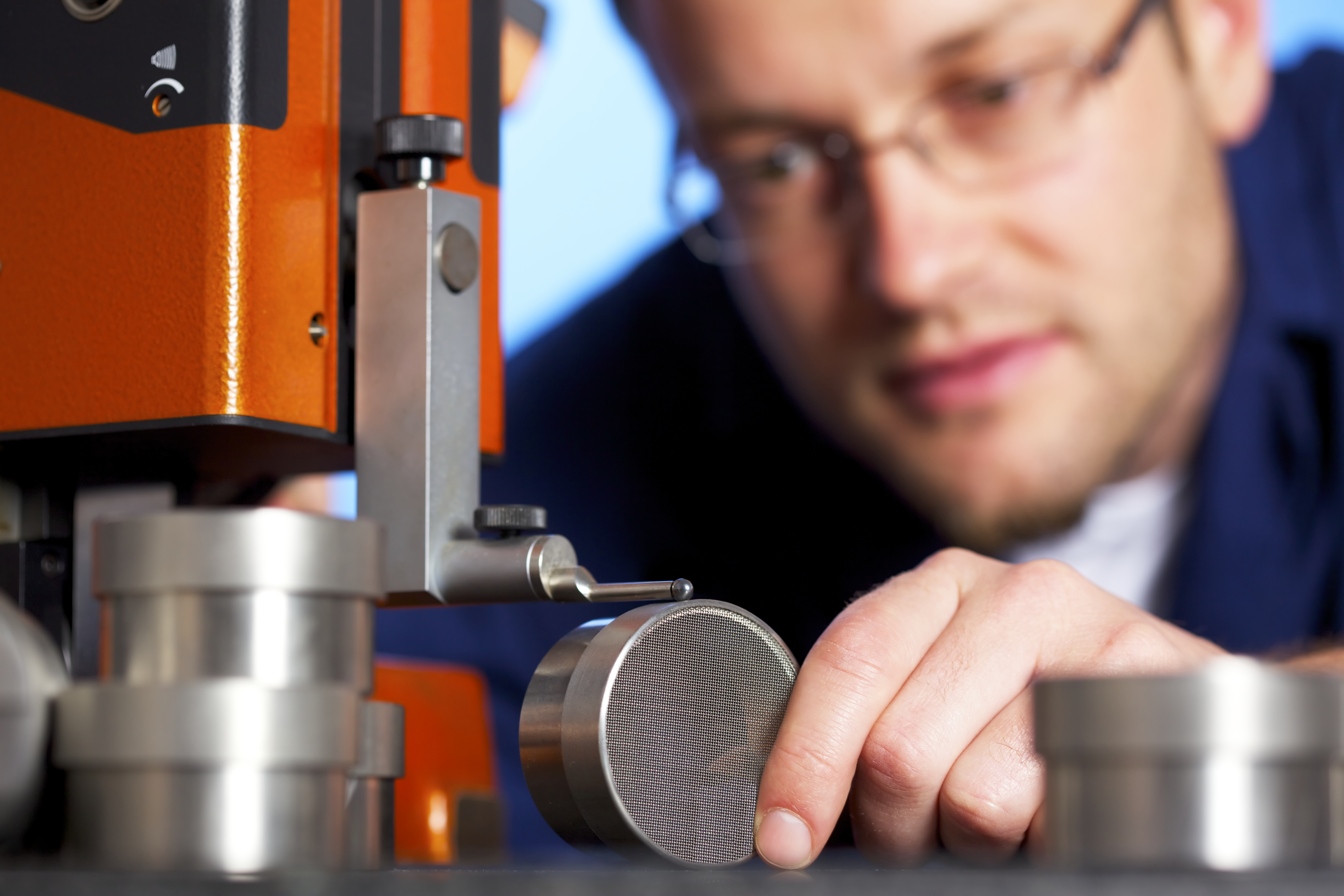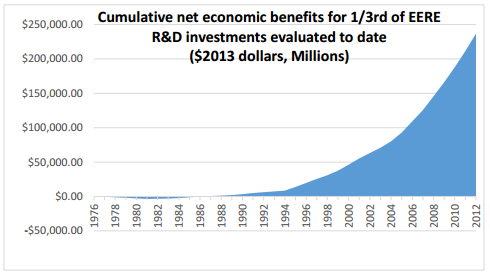Department of Energy’s Research Programs Keep Efficiency on the Cutting Edge

Department of Energy’s Research Programs Keep Efficiency on the Cutting Edge
The Department of Energy (DOE) drives innovation in energy efficient transportation, buildings, manufacturing, and homes among others through its Office of Energy Efficiency and Renewable Energy (EERE), Advanced Research Projects Agency for Energy (ARPA-E), and other partnerships with the private sector and academia. By accelerating the development of new, cutting edge energy efficiency technology, DOE helps commercialize new products and accelerate market transformation. This process of research design and development not only reduces energy demand and benefits the American economy, but also increases the U.S. market share of innovative energy technology, reduces imports, and mitigates pollution.
DOE R&D Programs Deliver Impressive Returns on Investment
In an independent cost-benefit analysis of DOE’s EERE research and development (R&D) programs, results showed that the total taxpayer investment of $12 billion in one-third of EERE’s total R&D portfolio yielded an estimated net economic benefit of more than $230 billion to the U.S. economy, with a 20% annual rate of return on investment. The cost-benefit ratio of the programs is 7 to 1, which is an in impressive return on investment to the U.S. economy.
Source: DOE
ARPA-E: A Springboard for Fresh Ideas in Energy Efficiency Technology
The Advanced Research Projects Agency for Energy (ARPA-E) advances high-potential, high-impact energy technologies that are too early for private-sector investment. After surviving a rigorous and competitive selection process, ARPA-E awardees work to develop new ways to generate, store, and use energy. Because the program focuses on projects that could be transformational for the American economy, national security, and the environment with a small amount of investment, the program yields big results from a limited amount of funding.
In 2014, ARPA-E announced that twenty-two projects, which had received about $95 million in federal funding, raised over $625 million in private-sector investment, not including two major projects that went public. The technology-to-market model reaches every sector of energy efficiency. In manufacturing, Alcoa is designing a new electrolytic cell that could significantly improve the efficiency and price point of aluminum production. In transportation, Bettergy is developing an inexpensive battery that uses a novel combination of solid, non-flammable materials to hold a greater amount of energy for use in electric vehicles. In infrastructure, A2 is developing a building moisture and heat exchange technology that leverages a new material and design to create healthy buildings with lower energy use. The projects are just a small representation of high level of innovation that leverages small investments to reduce energy use and save Americans money while supporting thousands of good jobs with contractors from all over the nation.
DOE’s Partnerships Provide a Boost for Private Sector and Academic Innovation
DOE facilitates several programs that partner with the private sector and universities to leverage DOE expertise and capacity with private sector and academic innovation. One such program, the Technologist in Residence (TIR) program, connects national laboratories with private-sector companies to encourage collaborative research and development. TIR initially launched in December 2015 with seven industry-lab pairs. Together, Los Alamos National Lab and Proctor & Gamble accelerated innovation for large-scale, sustainable manufacturing to reduce the environmental impact of manufacturing at P&G facilities. The National Renewable Energy Laboratory and Hewlett-Packard worked together to improve the energy-efficiency of data centers. By fostering connections between senior technologists and industry professionals, DOE bridges the gap between the public and private sectors to accelerate clean energy solutions.
DOE also funds a program that helps connect university students to industry and business to advance building efficiency in support of former President Obama’s goal of doubling energy productivity by 2030 and strengthening America’s clean energy workforce. Under the Building University Innovators and Leaders Development (BUILD) program, universities compete for energy efficiency research and development funding, with 50% of each $200,000 award going to university students’ projects and the other half going to industry partners. At the University of California, Davis, undergraduate students awarded by the BUILD program will collaborate with industry partners to develop and assess a new EnergyPlus solution to model hybrid rooftop air conditioners, which integrate multiple cooling factors to increase comfort and efficiency.
STAY EMPOWERED
Help the Alliance advocate for policies to use energy more efficiently – supporting job creation, reduced emissions, and lower costs. Contact your member of Congress.
Energy efficiency is smart, nonpartisan, and practical. So are we. Our strength comes from an unparalleled group of Alliance Associates working collaboratively under the Alliance umbrella to pave the way for energy efficiency gains.
The power of efficiency is in your hands. Supporting the Alliance means supporting a vision for using energy more productively to achieve economic growth, a cleaner environment, and greater energy security, affordability, and reliability.




